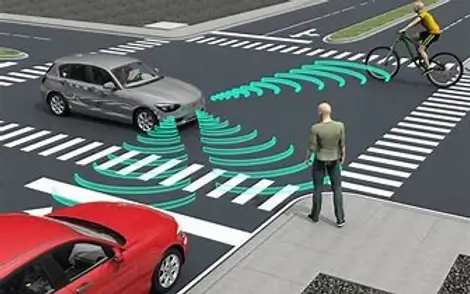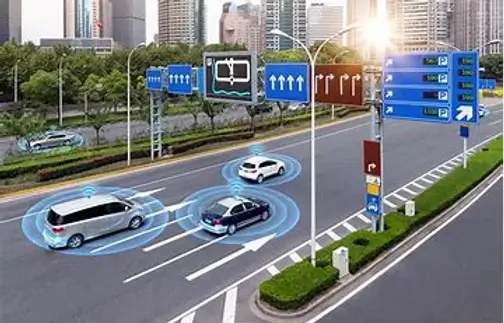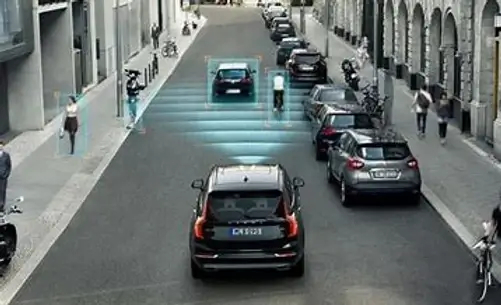At the recent CES 2020 event in Las Vegas, there was a lot of interest in the session for “Autonomous Vehicle Technology and Public Trust.” For good reason. With safety being one of the uppermost concerns for autonomous vehicles, the session was a forum on the public’s general distrust in such vehicles, spurred primarily by the AV industry’s lack of transparency to this point.
As ClearObject’s Ron Felice wrote in his blog post while he was at CES, “The public needs to understand what’s really happening with autonomous vehicle technology. What types of tests are being done? What are the results of those tests? Just how well, or poorly, are these vehicles performing? The answers may not paint a rosy picture, but the reality is that these vehicles are being improved by the companies that design and manufacture them… and issues like safety are certainly being addressed.”
So, safety, testing and performance. To improve these issues, AI and machine learning are playing a greater role in the training process for autonomous vehicle technology. But a somewhat unobserved element here? Cultural training, which also ties into the AI and ML backbone for self-driving cars and trucks, their performance, and their safety.
When we did the research for our white paper on the top IoT and ML trends in 2020, we determined that the training for autonomous vehicle technology will indeed become more cultural. “Self-driving vehicles are already intelligent, but are still learning unwritten rules of the road and idiosyncrasies such as ‘Turn right on red.’ Given every state, province, country and territory worldwide that has roads and drivers, these rules and idiosyncrasies are endless.”
For the engineers and automakers who continue to make autonomous vehicle technology smarter, our belief is that understanding driving practices more thoroughly in cultures worldwide will help them increase compatibility between autonomous vehicles and human drivers. “2020 will see more testing facilities globally to train these vehicles for every driver scenario imaginable,” we wrote.
“After all, the goal for safe — and law-abiding — autonomous vehicles is to make them think like a human.” That means thinking like a human wherever people live and drive in the world.
The Autonomous Vehicles Readiness Index
To that end, analysts at KPMG ranked what they termed the 20 most autonomous vehicle ready countries in the world in their Autonomous Vehicles Readiness Index. Published in 2018, the index ranked The Netherlands first based on its “excellent road infrastructure, a highly supportive government and enthusiastic adoption of electric vehicles.” Singapore ranked second, thanks largely to an amendment to its Road Traffic Act that allows self-driving vehicles to be tested on public roads. Surprisingly, despite having some of the most implemented innovations in autonomous vehicle technology as well as AI and ML, the United States rated third. Sweden and the United Kingdom rounded out the top five on KMPG’s list.
Culturally, the readiness index weighted criteria for road infrastructure in each country in the study, including on-road telematics, signage, crash barriers, lane widths and curbs. The number and locations of charging stations for electric vehicles were also considered. Other criteria included how autonomous vehicles affected public transport schemes, parking schemes and multimodal transport in each country.

Looking to the future of autonomous vehicle technology, KPMG’s index further considered how road traffic regulations, designed for use by humans, would eventually be replaced by intelligence-based protocols. Such protocols would determine road rules like priority at roadway intersections and junctions (such as roundabouts), when to yield to emergency vehicles, when pedestrians have the right of way, and so on. Ultimately, data generated by AVs themselves would dictate road condition monitoring for these kinds of rules in specific locales.
More diverse and intricate training via AI and ML

Until then, other factors specific to certain countries and cultures will continue to determine how autonomous vehicle technology is trained using AI and ML. For instance, road signs vary greatly from one country to the next — and from one state, city or municipality to the next, for that matter — and reading and understanding them is challenging for a robot. AVs and associated technologies like GPS therefore might not be able register certain traffic signs, new signs that get posted, recent changes in road conditions and even obstacles like potholes until they’re trained to do so.
Equally still difficult for autonomous vehicle technology to understand is human behavior such as foot traffic, jaywalkers, and hand signals. When AVs need to acknowledge and react to erratic human behavior or non-verbal communications, the driverless vehicle might fail unless adequately trained. Even for AI and ML, this kind of training could pose a tricky learning curve.
Or consider cultural conditions like those in India, which is further behind more developed countries in AV adoption and will probably remain so. Attribute India’s standing to the country’s chaotic and poorly maintained roads, inadequate signage, and driver hazards from rickshaws and auto-rickshaws to trucks, cycles, hard-carts, and even cows and camels. Again, the learning curve for culturally training AVs via AI and ML would be steep, if not impossible.
Therefore, along with AI and ML training, the road systems and infrastructure in various countries (and states and cities) will likely require upgrades for autonomous vehicles to operate on them.
Can training be standardized across cultures?
Going forward, different countries will no doubt arrive at different conclusions concerning these issues. Depending on travel patterns, traffic volumes, pedestrian traffic, public transport alternatives and other cultural parameters, AV futures will differ from country to country. Can basic standards of interoperability and AV training be developed and implemented across countries, and potentially across entire continents? It’s possible, although it will require a true global effort.
The reality is, autonomous vehicle technology will have far-reaching implications across several areas of policy-making for countries worldwide. And according to KPMG in its Autonomous Vehicles Readiness Index, now is the time to plan for and train AVs on a cultural level by focusing on three ongoing core objectives.
1. Revise national and local transportation strategies and spatial development blueprints. Countries, provinces, states, cities, etc. can do this by investing in high-quality AV-ready road infrastructure that features abundant electric charging points and next-generation mobile ………communication technologies.
2. Promote and embrace partnerships between public authorities and private sector developers, as Singapore continues to do with its Road Traffic Act and allowing self-driving vehicles to be tested on public roads. Collectively, measures such as legislation to remove regulatory ……….barriers, dedicated government agencies to drive AV adoption, and proactive engagement with developers to support AV pilots and help ,,,,,,,,,fund innovation will speed the development of autonomous vehicle technology. Measures like these will also ensure that AV technology — ……….and especially safety — meets public policy objectives.
3. Bring together all key stakeholders as a global community, not just an industry. Culturally, autonomous vehicles will continue to change ………how people live and work around the world. If we engage as widely as possible in evaluating what these vehicles mean for the future and ……….train them accordingly, they will maximize economic, environmental and road safety benefits for society as a whole.
Read our new white paper for the top IoT trends in 2020.

About ClearObject
ClearObject is a digital transformation leader in Internet of Things (IoT) Engineering and Analytics. As IBM Watson IoT and Google Cloud Business Partners, we deliver global embedded software development environments for our customers, and design and deliver unique data analytics digital products that help them recognize the value of their data. Our objective is clear: help the world’s best companies build intelligence into their products and gain intelligence from them. The future is clear. Do you see it?
#autonomousvehicletechnology #ai #ml

